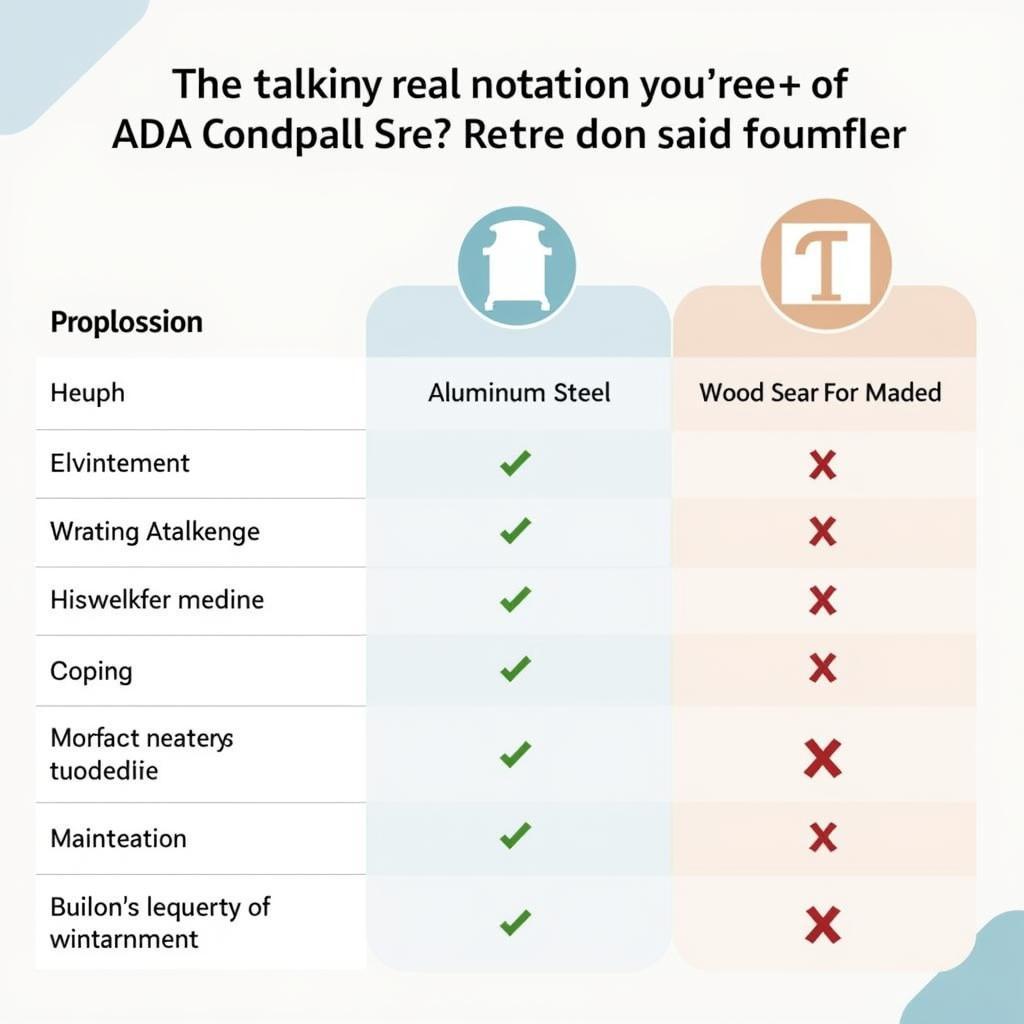ADA Handrail Kits: A Comprehensive Guide
November 13, 2024Ada Handrail Kits are essential for ensuring accessibility and safety in various settings, from homes and businesses to public spaces. They provide crucial support for individuals with mobility challenges, allowing them to navigate stairs and ramps with confidence. Choosing the right ADA handrail kit is vital for meeting safety regulations and providing a secure and comfortable experience for everyone.
Understanding ADA Handrail Kit Requirements
ADA handrail kits must adhere to specific guidelines to ensure they meet the needs of people with disabilities. These regulations dictate aspects like handrail height, diameter, and clearance from the wall. Understanding these requirements is crucial for selecting a compliant and effective handrail system. For instance, handrails must be mounted between 34 and 38 inches above the walking surface. The diameter should be between 1.25 and 2 inches, providing a comfortable grip for users. Additionally, there must be a 1.5-inch clearance between the handrail and the wall. These specifications ensure that individuals with various disabilities can use the handrails safely and effectively.
Key Considerations When Choosing an ADA Handrail Kit
Several factors influence the selection of the appropriate ADA handrail kit. The location, environment, and anticipated usage are crucial considerations. Indoor handrails might prioritize aesthetics and blend seamlessly with the interior design, while outdoor handrails need to withstand the elements and offer enhanced durability. Furthermore, the specific needs of the users should also be taken into account.
Different Types of ADA Handrail Kits
ADA handrail kits come in various materials, each with its own advantages and disadvantages. Common materials include aluminum, steel, and wood. Aluminum handrails are lightweight, corrosion-resistant, and require minimal maintenance, making them ideal for outdoor applications. Steel handrails are known for their strength and durability, suitable for high-traffic areas. Wood handrails offer a classic and elegant aesthetic, often preferred for indoor settings.
Choosing the Right Material for Your Needs
Selecting the right material depends on several factors, including budget, aesthetic preferences, and environmental conditions. For example, in coastal areas, aluminum or stainless steel handrails are preferred due to their resistance to saltwater corrosion. In indoor settings, wood handrails can add a touch of warmth and elegance. Ultimately, the choice depends on the specific requirements of the project.
 Different Types of ADA Handrail Kits
Different Types of ADA Handrail Kits
Installing Your ADA Handrail Kit
Proper installation is critical for ensuring the safety and effectiveness of ADA handrail kits. While some kits offer straightforward DIY installation, complex projects may require professional assistance. Always refer to the manufacturer’s instructions and local building codes for specific guidance. A poorly installed handrail can pose a safety hazard and fail to provide the necessary support.
Tips for a Successful Installation
Before starting the installation, ensure you have all the necessary tools and materials. Measure carefully and mark the desired handrail location accurately. Use appropriate fasteners and ensure all connections are secure. Finally, inspect the installed handrail thoroughly to ensure it meets all ADA requirements.
“A properly installed handrail is not just about compliance; it’s about providing a safe and accessible environment for everyone,” says John Smith, Certified Accessibility Specialist at Accessible Solutions Inc.
 ADA Handrail Kit Installation Process
ADA Handrail Kit Installation Process
Conclusion
Choosing and installing the right ADA handrail kit is crucial for ensuring accessibility and safety. By understanding the ADA requirements, considering the various material options, and following proper installation procedures, you can create a safe and accessible environment for everyone. Investing in a high-quality ADA handrail kit is an investment in safety and inclusivity.
FAQ
- What is the standard height for ADA handrails? (34-38 inches above the walking surface)
- What materials are ADA handrails typically made of? (Aluminum, steel, and wood are common)
- Do I need professional help to install an ADA handrail kit? (It depends on the complexity of the project)
- Where can I find ADA handrail kit installation instructions? (Refer to the manufacturer’s instructions)
- What are the benefits of using an ADA handrail kit? (Enhanced safety and accessibility)
- How do I choose the right ADA handrail kit for my needs? (Consider the location, environment, and user needs)
- What are the key ADA requirements for handrails? (Specific height, diameter, and wall clearance)
When you need support, please contact Phone Number: 0963418788, Email: [email protected] Or visit the address: 2M4H+PMH, Phường Nghĩa Thành, Gia Nghĩa, Đắk Nông, Việt Nam. We have a 24/7 customer service team.